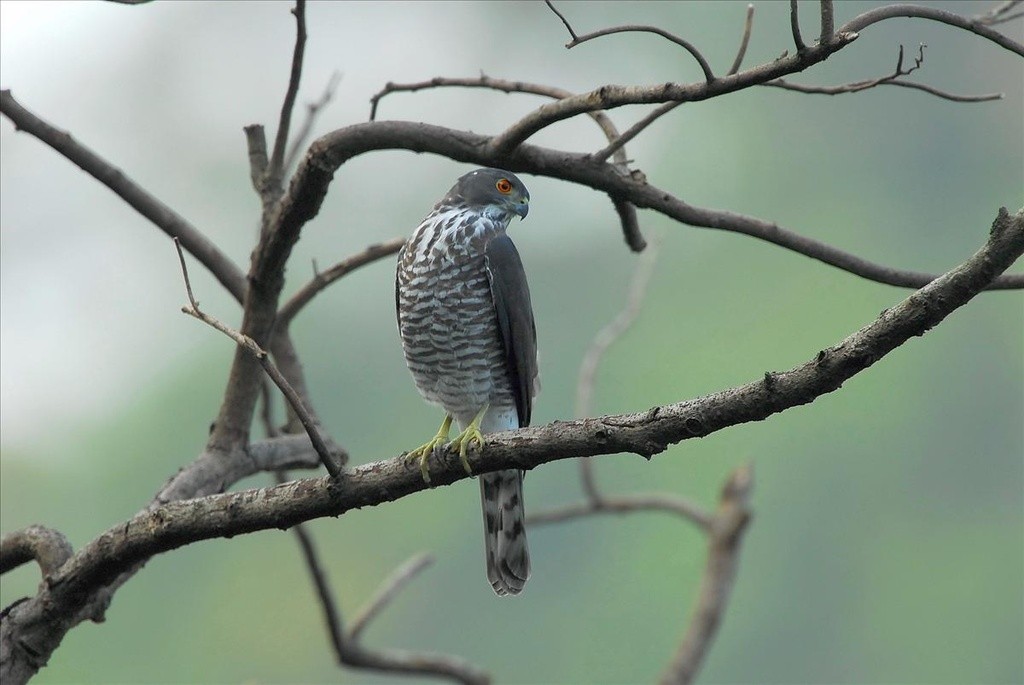Besra
A species of Bird Hawks Scientific name : Accipiter virgatus Genus : Bird Hawks
Besra, A species of Bird Hawks
Botanical name: Accipiter virgatus
Genus: Bird Hawks
Content
Description General Info
 Photo By Robert tdc , used under CC-BY-SA-2.0 /Cropped and compressed from original
Photo By Robert tdc , used under CC-BY-SA-2.0 /Cropped and compressed from original Description
The besra (Accipiter virgatus), also called the besra sparrowhawk, is a bird of prey in the family Accipitridae. The besra is a widespread resident breeder in dense forests throughout southern Asia, ranging from the Indian subcontinent eastwards across Southeast Asia and into East Asia. It nests in trees, building a new nest each year. It lays 2 to 5 eggs. This bird is a medium-sized raptor (29 to 36 cm) with short broad wings and a long tail, both adaptations to fast maneuvering through dense vegetation. The normal flight of this species is a characteristic "flap–flap–glide". This species is like a darker version of the widespread shikra with darker upperparts, strongly barred underwing, broader gular stripe and thin long legs and toes. The adult male besra has dark blue-grey upperparts, and is white, barred reddish brown below. The larger female is browner above than the male. The juvenile is dark brown above and white, barred with brown below. In all plumages have 3-4 equally sized dark bands on uppertail. In winter, the besra will emerge into more open woodland including savannah and cultivation. Its hunting technique is similar to other small hawks such as the sparrowhawk and the sharp-shinned hawk, relying on surprise as it flies from a hidden perch or flicks over a bush to catch its prey unaware. The prey is lizards, dragonflies, and small birds and mammals. 
Size
36 cm
Colors
Brown
Black
Gray
White
Nest Placement
Tree
Feeding Habits
Besra predominantly preys on lizards, dragonflies, and small birds and mammals, showcasing hunting skills and specific dietary preferences unique to its species.
Habitat
Besra, thrives in a range of habitats from lowland to high-altitude montane zones. Their preferred environments include moist deciduous and evergreen montane forests, secondary growth areas, plantations, mangroves, and occasionally open woodlands like savannahs. Besra inhabits elevations typically up to 2200 meters, sometimes breeding up to 3300 meters. Their habitat spans broad regions, favoring forested areas over specific locations.
Dite type
Carnivorous
General Info
Feeding Habits
Bird food type
Species Status
Not globally threatened.